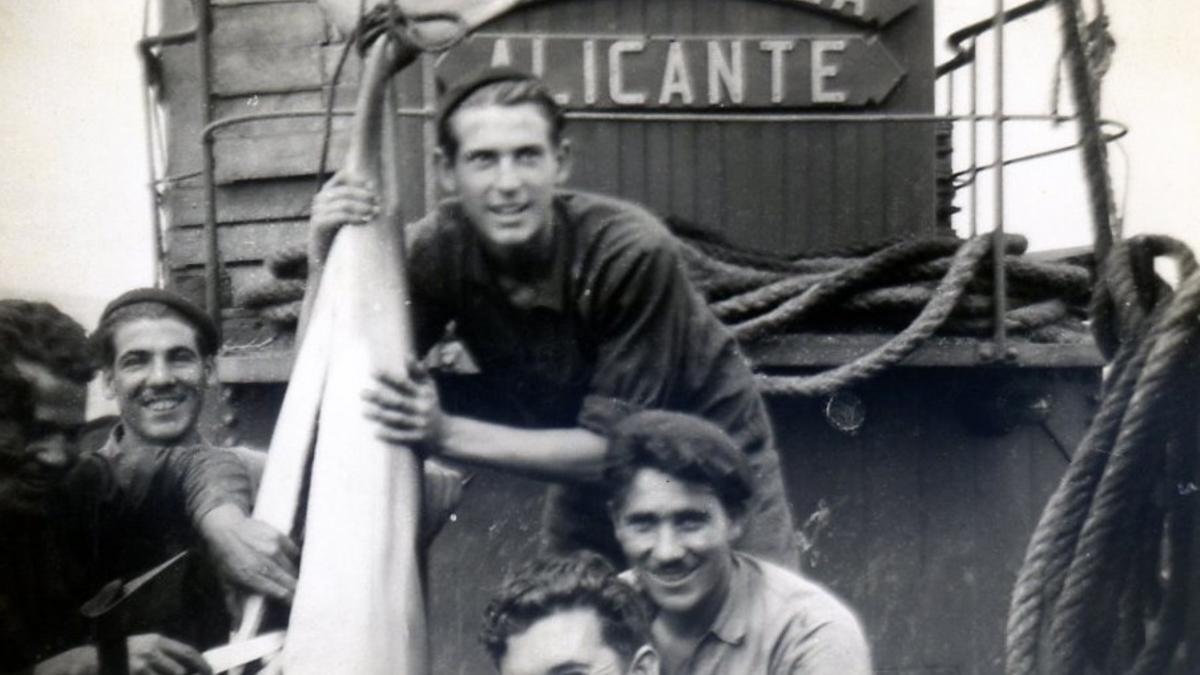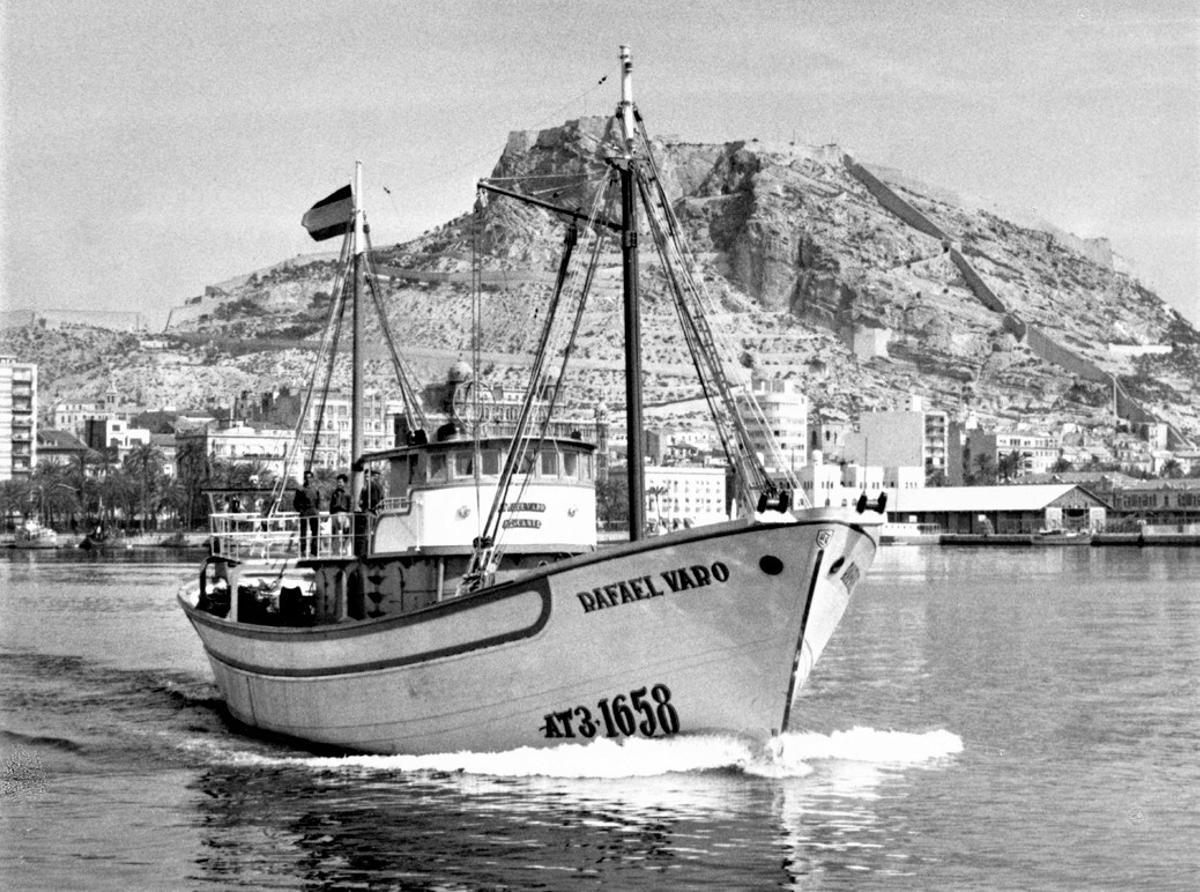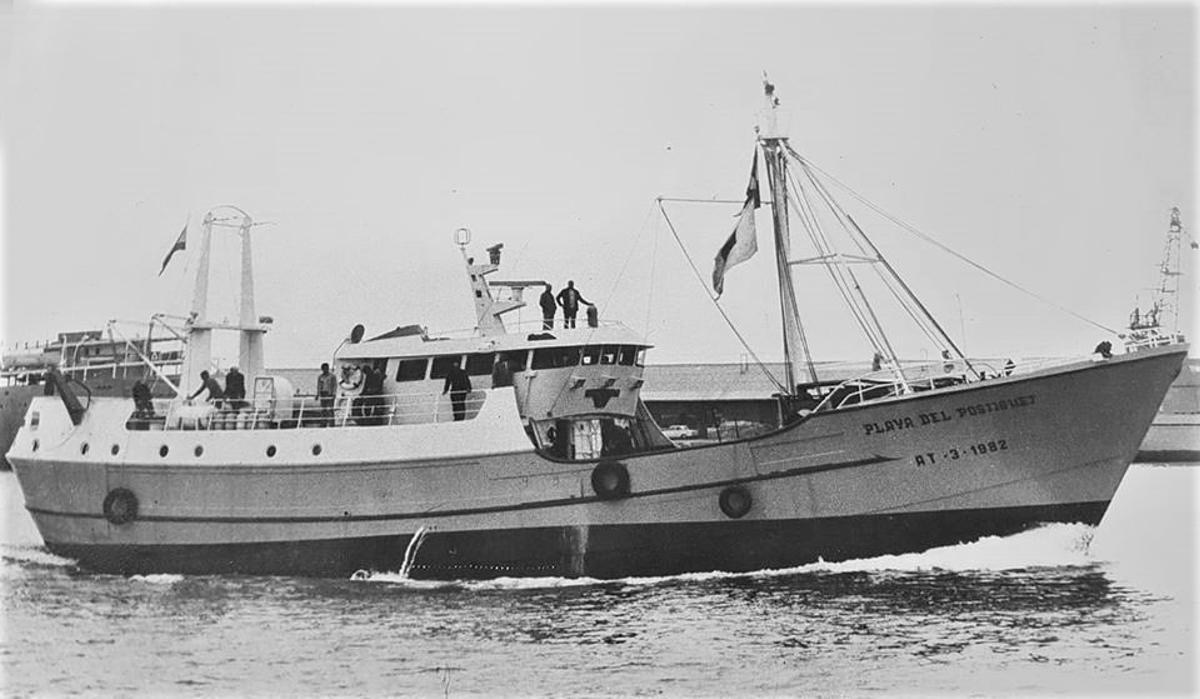
Romana squid, grilled, Andalusian, stuffed, … one of the Typical dishes in every bar worth its salt You have to have this cephalopod mollusk in your letter. On the other hand, one of the most viewed series in the history of Netflix tells in its title with that name: “The squid game”.
Now we are going to ride at eighty years, in the summer of 1945, when in the history of the fishing of El Campello the so -called “Time of squid” began. It meant a whole turning point in an industrial activity which occupied more than a thousand people and was the main economic engine of the municipality.
Already during the initial decades of the twentieth century, the campellera fishing fleet was considered First in terms of wooden vessels Of the entire Spanish State, with 120 active units in 1925, according to existing documents in the local brotherhood.
It was VELA FALUCHOS that worked regularly by the Mediterranean coast and, between April and September, they completed the larache season along the North African western coasts.
Folders
With the passage of time, the search for job stability and the removal of fishing areas They would originate the progressive motorization of the ships and the construction of new ones, which allowed the activity in distant underwear and ended the seasonality of the Atlantic campaigns.
Although, according to Professor Antoni F. Sempere, in 1923 the first engine was installed, it was not until the mid -forties of the last century, that a new paradigm for the fishery fleet of El Campello is glimpsed, coinciding with a change of eating habits that tends to a Progressive replacement of salazones with fresh and refrigerated fish.
The network came full of clean squid, as if it were a potary, much appreciated and better paid “
A dilemma that, added to the deterioration suffered by the Campellera flotilla during the Civil War years, will accelerate the transformation of the traditional modality of blue fish fishing, with open and seasonal networks, by drag arts exercised from vessels with large refrigerators and powerful engines, as required by the new manufacturing modality in the waters of the Atlantic Ocean.
Try luck
In this situation, in the middle of the year 1945 and once the II World War is finished “it is when Start commented among shipowners that the squid was 'made' – he came – very well in Barcelona; And it was Vicente Palomares Gomis, fishing pattern of 'Mari Chea', the first to try their luck in that fishing company, “says Rafael Galvañ I Esplà (July, 1925), crew of said drag by those dates and only living testimony of the ephemeris.
Until then, the boats went to the hake, kiss or sole And, among them, some cephalopod bank entered, “but one day, in mid-June, being sheltered from the end of Agadir-then Moroccan city under French protectorate-, to Cento Malamaera It occurred to him to make a run near the beach And the network came full of clean squid, as if it were a potary, much appreciated and better paid, “recalls Rafel.
And of the same, without saying anything to anyone, they marched towards the Catalan capital, making a Trip “Redondo, of more than 4,000 of the pesetas From then on, in just twenty days, including the round trip to the city. “
In any case, they saw that many days were lost to go up and down, so that the Toni shipowner “Joanot”, Antonio Orozco Baeza, considered that I went out to send fishing for the ship called mail from the Canary Islands, which linked Las Palmas and Barcelona.
“Although Our profits won because the sailors no longer controlled the auction And some box that was spoiled or lost by the journey, “concludes with irony the dean of the sailors of El Campello.

Rafael Call / Julià P. Soler
The voice was run
The event was soon in the public domain and The rest of the boats also set aside the scale fish and They opted for the new modality, starting that summer of 1945 what the men of the sea call the “time of the squid.”

Rafael Motopesquero Varó, in 1960 / Varó Caturla family
With the increase in income and the loans of the State Plan for Fisheries Fleet, in January 1946, a stage of renewal and expansion of registration began, which resulted Three decades of feverish activity and large benefits For owners and crews, with the consequent impact on the gross domestic product of the municipality.
Since the increase in drag caused the Overexploitation of Agadir Fisheries Bankthe patterns were following the wake of the cephalopods increasingly south.
First around Cabo Juby and, in the sixties, by the area of Peña Grande, in the former Western Sahara, considered '”The ocean of abundance” For the fisherman community because “I had fish at the height of the stick,” Galvañ confirms.
Four million
The good march of the sector was reflected in the Incorporation of older and more powerful shipssome valued at four million pesetas, which was a fortune in the early sixties.
The Campello came to have 64 units that gave work to thousands of people, counting those who worked in those of related industries, such as spinning workshops, ferrerías, shipyards, rediers, etc.
The situation continued in the seventies with the Incorporation of freezing ships.

Postiguet beach freezer, in a 1970 image / Bernabeu brothers
But the positive dynamic led by the transfer of boats to Canarian base ports ylA progressive distance from fishing areasthat reached South Africa, Boston and the Falkland Islands.
Decline in the seventies
This circumstance, added to socioeconomic changes and the lack of generational reliefthey ended up weakening the main industrialist of the municipality and the hierarchical level of the Fishermen's brotherhood, which went down to second category In December 1974. This entity currently maintains a testimonial social and productive irrelevance.
In parallel to the loss of fishing potential, due to the crop and Export of tomatoes And the advent of mass tourism, the Campello went from being a town dependent on the sea to a municipality that lives back to it.
And that to the point of being ignored, not only by the foreign population, but for The new local generationsthat industry that was the main source of wealth of the campellera population throughout the twentieth century.
They were men and women of the sea who, despite having starred in the brightest pages in the history of El Campello, They remain unknown For most of its current inhabitants.
Subscribe to continue reading